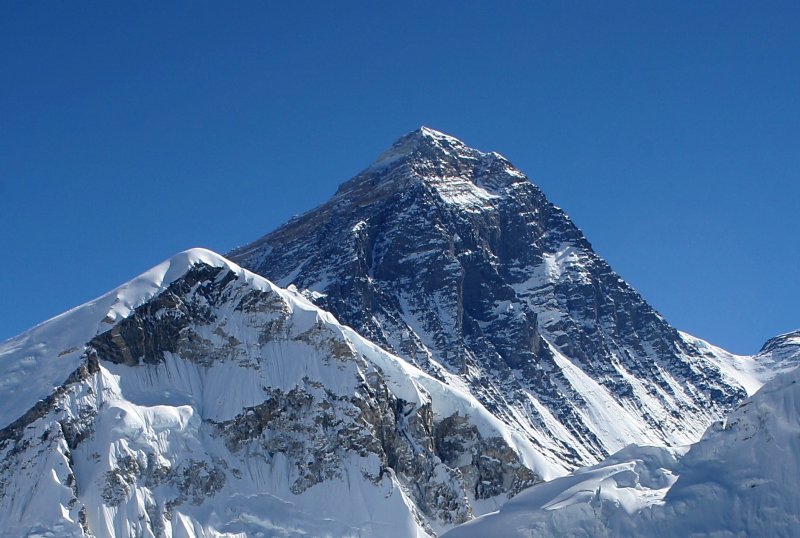
Seven
Natural Wonders of the World:
Mount Everest
Mount
Everest is the highest mountain on Earth, as measured by
the height of its summit above sea level, which is 8,848 metres
(29,029 ft). The mountain, which is part of the Himalaya range in
High Asia, is located on the border between Sagarmatha Zone, Nepal,
and Tibet, China.
The highest mountain in the world attracts climbers of all levels,
from well experienced mountaineers to novice climbers willing to
pay substantial sums to professional mountain guides to complete a
successful climb. The mountain, while not posing substantial
technical climbing difficulty on the standard route, still has many
inherent dangers such as altitude sickness, weather and
wind.
"Death
Zone"
By
the end of the 2007 climbing season, there had been 3,679 ascents
to the summit by 2,436 individuals. Everest has claimed 210 lives,
including eight who perished during a 1996 storm high on the
mountain. Conditions are so difficult in the death zone that most
corpses have been left where they fell, some of which are visible
from standard climbing routes.
Naming
The Tibetan name
for Mount Everest is Chomolungma or Qomolangma (which means
"Saint Mother"), and the Chinese transliteration is
Zhūmùlǎngmǎ Fēng, which refers to Earth Mother; the Chinese
translation is Shèngmǔ Fēng, which refers to Holy Mother. According
to English accounts of the mid-19th century, the local name in
Darjeeling for Mount Everest was Deodungha, or "Holy Mountain".
In 1865, the mountain was officially given its English name by the
Royal Geographical Society after being proposed by Andrew Waugh,
the British Surveyor General of India. Waugh chose to name the
mountain after George Everest, first using the spelling Mont
Everest, and then Mount Everest.

Measurements
The mountain has
been found to be 8,848 metres (29,029 ft) high,
although there is some variation in the measurements. The
PRC's State Bureau of Surveying and
Mapping officially announced the height of Everest as 8,844.43 m ±
0.21 m. They claimed it was the most accurate and precise
measurement to date. This height is based on the actual highest
point of rock and not on the snow and ice covering it.
The Chinese team also measured a snow/ice depth of 3.5 m, which is
in agreement with a net elevation of 8,848 m. The snow and ice
thickness varies over time, making a definitive height of the snow
cap impossible to determine.
First
Ascents Without Supplemental Oxygen
On
8 May 1978, Reinhold Messner (Italy) and
Peter Habeler (Austria) made the first ascent
without supplemental oxygen, using the southeast ridge route. On 20
August 1980, Messner reached the summit of the mountain solo for
the first time, without supplementary oxygen or support, on the
more difficult Northwest route via the North Col to the North Face
and the Great Couloir. He climbed for three days entirely alone
from his base camp at 6,500 metres (21,300 ft).
Reference / Image
Credits:
Wikipedia
1.
Wikimedia
2.
Sky Control
3.
National Geographic
Post Comments